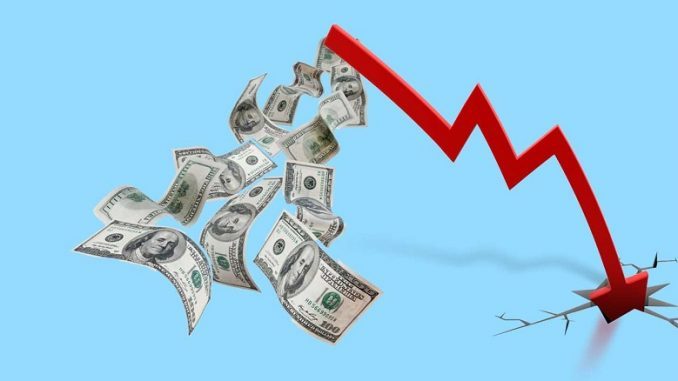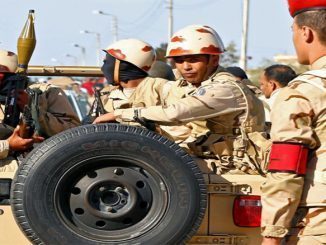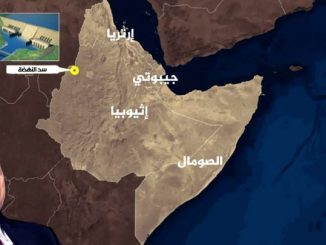
Under Sisi, Egypt’s Economy and Corruption Resemble Lebanon, states World Politics Review
“When pursuing new research, academics occasionally stumble across half-forgotten projects that remind them of how distant the recent past can feel. In the past few weeks, some of my own old notes on developments during the runup to Egypt’s 2012 presidential election provided a jarring sense of how much has changed over the past decade, in that country as well as around it,” states a recent report by Alexander Clarkson published by World Politics Review, continuing as follows:
Looking at the world of 2012—a time when the European Union was struggling to save the euro, Russia was touting itself as a reliable energy supplier and mass protests across the Middle East were toppling strongmen like Egypt’s Hosni Mubarak—the political developments of 2022 at times feel like a parallel universe.
Yet if one looks at underlying structural pressures, the extent to which many of the same underlying economic and social dynamics that triggered the turmoil of the early 2010s continue to shape the crises of the early 2020s becomes apparent. The outcome of that Egyptian election a decade ago made Mohamed Morsi the first and only member of the Muslim Brotherhood to become the country’s president. The subsequent toppling of Morsi’s government in July 2013 by a military coup led by Abdel Fattah el-Sisi—then a general, now the country’s civilian president—symbolizes the failure of the Arab uprisings that generated so much hope for a democratic springtime throughout the Middle East. A decade later, however, the economic inequalities and institutional dysfunctions that fueled this brief period of revolt are still a source of deep instability across the region.
In the EU and U.S., the Arab uprisings are now largely seen as a closed historical chapter whose fate was sealed by civil wars and authoritarian restorations. Whether it was the fall of the rebel-held Syrian city of Aleppo in December 2016, the fragmentation of Libyan society or civil war in Yemen, the withering of prospects for reform has been accepted by Western policymakers who once again seek deals with local strongmen in the hopes of achieving narrowly defined stability. In countries not directly affected by the Arab uprising, like Saudi Arabia and the United Arab Emirates, deepening domestic repression has accompanied a growing willingness to bankroll a return to dictatorship in other Arab societies, such as the Sisi regime in Egypt or more recent efforts by President Kais Saied to construct a one-party state in Tunisia. Despite these efforts, however, there are growing signs across the region that efforts to restore repressive forms of state patriarchy may prove less stable than they seem on the surface.
While fear of Islamist or jihadist movements initially generated widespread support in the Gulf monarchies for strongmen, the crushing of the Muslim Brotherhood and the military defeat of ISIS removed key factors that enabled the restoration of authoritarian rule. Though jihadist movements still represent a serious threat in parts of the region, the extent to which decades of warfare have destroyed their ability to operate at high tempo has meant that Arab populations have less incentive to unconditionally back state institutions that legitimized repression through an endless war on terror.
The parallel decline of Islamist movements through a combination of policy failure and corruption while in power, followed by the systematic dismantling of their organizational infrastructure after they were toppled, has also made it more difficult for authoritarian regimes to use polarization over the role of religion in public life to distract from economic crisis.
That has created an environment in which jihadist attacks, sectarian rivalries and fears of now increasingly moribund Muslim Brotherhood networks are no longer enough to sustain public support for a ruling elite.
In such circumstances, space can open up for other movements based on class, nationalist, ethnic or gender identities to mobilize effectively enough to become centers of power in their own right.
The first signs of how the inability of established elites to prevent state collapse could generate new forms of popular resistance emerged in Lebanon in 2019. After decades of mismanagement by the country’s Central Bank that benefited sectarian powerbrokers, a collapse in the value of the Lebanese pound generated a wave of mass protests cutting across class and religious lines. By late 2019, there were signs that even Hezbollah, with all the authoritarian tools at its disposal, was struggling to keep a lid on widespread anger within its own base in Lebanon’s Shiite community.
The longstanding economic dysfunctions that pushed Lebanon over the edge and now threaten Egypt indicate that the Middle East’s current status quo remains inherently unstable.
The COVID-19 pandemic, the huge explosion that destroyed the port of Beirut in August 2020 and the social stresses of total economic paralysis brought this wave of protest to a halt. Yet the extent to which public rage over corruption among the old elite enabled cooperation across community divides to help some reform candidates win seats in parliamentary elections earlier this year is an indication of how longstanding dysfunctions might shape new forms of resistance, mobilization and organization in the Middle East. That similar dynamics have unfolded in Iraq over the same period is one of several indications of how events in Lebanon reflected wider regional trends.
The turmoil in Lebanon, in particular, may presage similar dynamics in Egypt that could have a much more dramatic global impact. In a state with Egypt’s population—over 100 million people—a similar interaction between economic collapse and escalating state dysfunction would have knock-on effects that could destabilize an already fragile regional order and international system. Even as the Sisi regime tries to project an image of strength through prestige projects such as the construction of a new capital city, indications of serious problems with Egypt’s state finances and wider economy are beginning to mount, in ways that echo many of the problems Lebanon faces.
And just as Lebanese political elites continued to operate as if nothing was amiss even as unsustainable imbalances that had been building for years ran out of control, an Egyptian leadership dominated by a caste-like officer corps continues to skim off a deeply corrupt economic order that is rapidly hurtling toward further currency devaluations and a balance of payments crisis.
As risks of supply-chain implosion and hyperinflation mount in Egyptian communities that face the same endemic underemployment, broken infrastructure and incompetent governance that fueled the revolt in 2011 against Mubarak, there is something almost mesmerizing about the systemic complacency of the Sisi regime. Despite mounting signs of societal distress, the Egyptian state has maintained its swagger. Perhaps it is convinced of its own invulnerability, having survived the international outcry over the Rabaa Square massacre of Muslim Brotherhood supporters in 2013, security pressures on its borders, bail-outs from Gulf states and rounds of austerity that further reduced popular support. For all the growing concern within the walls of the Finance Ministry in Cairo, the Egyptian officer corps seems convinced that securing another loan from the IMF is all that is needed to avoid the consequences of corruption and military overreach, which have undermined the Egyptian economy since the 1970s.
But the insouciant self-confidence of Egypt’s military elite looks misplaced in an environment in which it is no longer as easy to sustain popular loyalty by stoking fear of Islamist and jihadist movements whose fortunes are on the wane.
This is especially true given that the discontent with the Sisi regime’s economic management now reaches into the highest management echelons of Egypt’s manufacturing and services sectors—a fact that has not escaped the notice of prominent figures from the pre-2011 system hoping for a comeback. Efforts by Gamal Mubarak, Hosni Mubarak’s son, to heighten his public profile after being cleared of various corruption charges over the past two years is a sign of how opportunities offered by Egypt’s crisis are being explored even within circles that had been toppled by previous waves of revolt.
The extent to which longstanding economic dysfunctions that pushed Lebanon over the edge and now threaten Egypt have continued to fester indicates that the Middle East’s current status quo remains inherently unstable. The wave of protests engulfing Iran are a reminder of how quickly the surface calm of an authoritarian system can tip into chaos if its elites refuse to reform economic and state structures in the face of global change. The efforts of U.S., EU or Gulf states to preserve stability in a state like Egypt are likely to prove futile if its ruling elites are unwilling to do what it takes to generate the prosperity and good governance needed to sustain the current regime’s social and political legitimacy.
The sense of historical distance between the current politics of the Middle East and the surge of resistance in 2011 that brought so many Egyptians together on Cairo’s Tahrir Square in the hope of a better future can feel overwhelming. But on closer inspection, the parallels between Egypt’s crisis in 2022 and the social inertia that became visible in the years building up to Hosni Mubarak’s fall are becoming increasingly apparent. Unless Egyptian elites come to terms with a world in which the only way to survive is by adapting to change, they will find the future that the Sisi regime has to offer will look a lot like Egypt’s recent past.
Alexander Clarkson is a lecturer in European studies at King’s College London. His research explores the impact that transnational diaspora communities have had on the politics of Germany and Europe after 1945 as well as how the militarization of the European Union’s border system has affected its relationships with neighboring states. His weekly WPR column appears every Wednesday.



